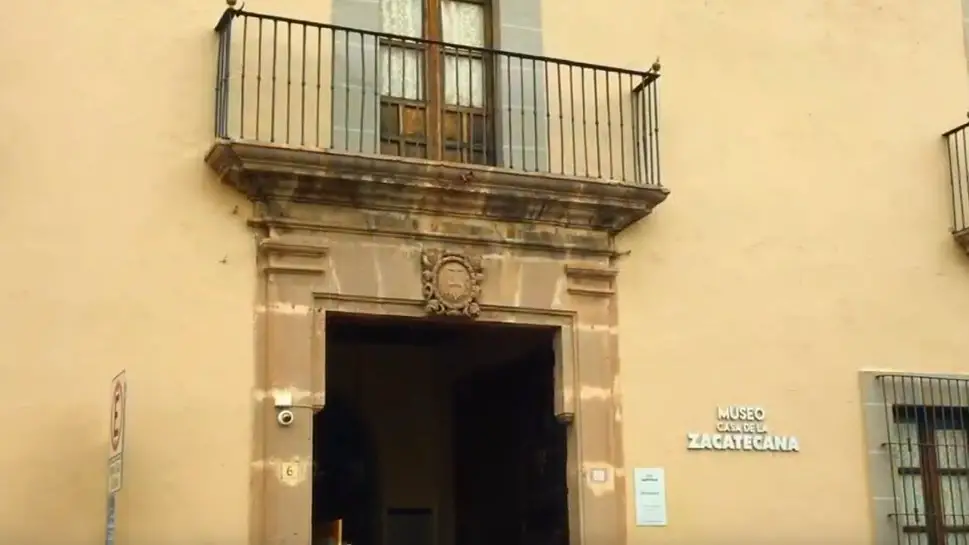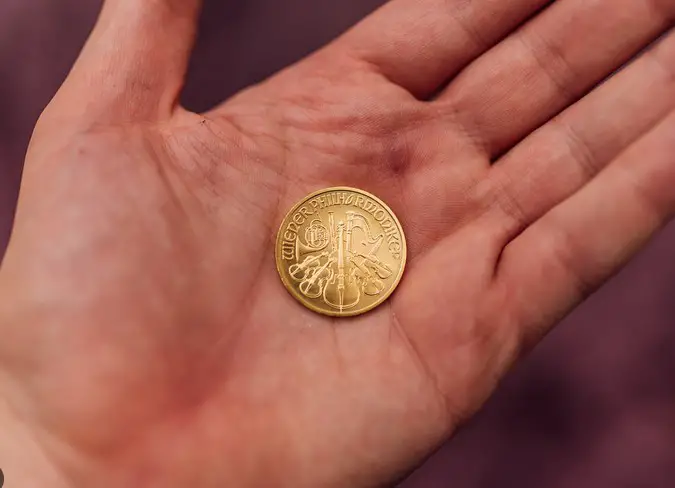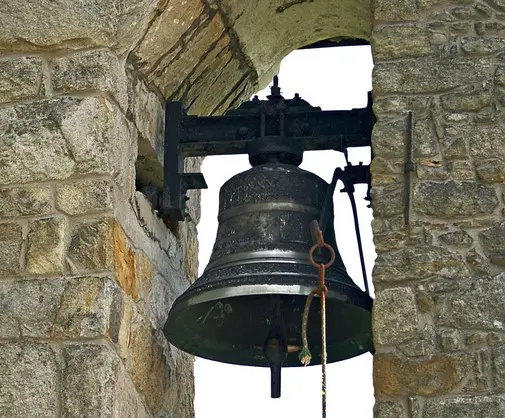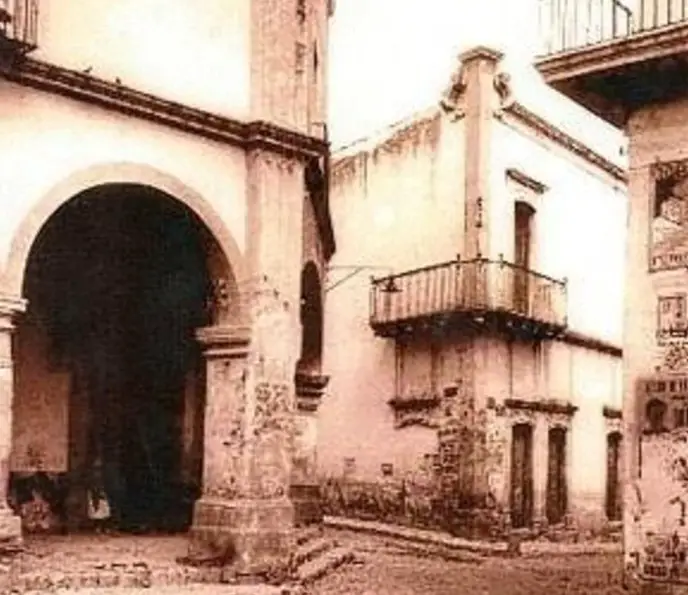Podcast: Play in new window | Download
Subscribe: Apple Podcasts | RSS
The Mexican state of Querétaro is located in the north-central part of the country in what is known as the Bajio region and borders Michoacán to the southwest, the state of México to the southeast, Hidalgo to the east, Guanajuato to the west and San Luis Potosí to the north. It is home to deserts, tropical forests and high mountains. It is also a place of many legends. Here are four.
- La Casa de la Zacatecana
 In English, “La Casa de la Zacatecana” translates to, “The House of the Woman from Zacatecas.” This notable house is still standing and currently serves as a museum. Its address is 59 Independencia Street, although in olden times the street was called “La Flor Alta” and the house number was 6. The legend of La Zacatecana dates back to the late 1850s even though the house was built sometime in the 1600s. The owners of the house were from the Mexican state of Zacatecas and had moved to the city of Querétaro because of mining investments. The husband of the couple spent much time away from home tending to his many business interests and there were rumors going around that he had affairs with many women in the small towns surrounding the city. The wife, known to history as La Zacatecana, became jealous and paid someone to have her husband killed. After the deed was done, she killed the killer, and buried both bodies in the stables of the house, thus covering up the crimes. For weeks La Zacatecana had to face suspicious townsfolk who wondered openly what had happened to her husband. There were also rumors flying around town about her, too, involving secret loves and infidelity. One morning, the body of La Zacatecana was found abandoned on a sidewalk facing the old Plazuela de las Tamboras. She had been stabbed in her bedroom and her body brought there for all to see. No one knows who murdered her but gossipers suspected that it was either a servant of her own household or a relative of the man she hired to kill her husband. People then claimed that strange things were happening in and around the house. The stately home changed hands multiple times and it now serves as a museum. Museum goers are struck by the strange feelings they get in certain rooms of the house and by sudden drops in temperature, as if some evil presence is still active on the property.
In English, “La Casa de la Zacatecana” translates to, “The House of the Woman from Zacatecas.” This notable house is still standing and currently serves as a museum. Its address is 59 Independencia Street, although in olden times the street was called “La Flor Alta” and the house number was 6. The legend of La Zacatecana dates back to the late 1850s even though the house was built sometime in the 1600s. The owners of the house were from the Mexican state of Zacatecas and had moved to the city of Querétaro because of mining investments. The husband of the couple spent much time away from home tending to his many business interests and there were rumors going around that he had affairs with many women in the small towns surrounding the city. The wife, known to history as La Zacatecana, became jealous and paid someone to have her husband killed. After the deed was done, she killed the killer, and buried both bodies in the stables of the house, thus covering up the crimes. For weeks La Zacatecana had to face suspicious townsfolk who wondered openly what had happened to her husband. There were also rumors flying around town about her, too, involving secret loves and infidelity. One morning, the body of La Zacatecana was found abandoned on a sidewalk facing the old Plazuela de las Tamboras. She had been stabbed in her bedroom and her body brought there for all to see. No one knows who murdered her but gossipers suspected that it was either a servant of her own household or a relative of the man she hired to kill her husband. People then claimed that strange things were happening in and around the house. The stately home changed hands multiple times and it now serves as a museum. Museum goers are struck by the strange feelings they get in certain rooms of the house and by sudden drops in temperature, as if some evil presence is still active on the property.
- The Shadow of Emperor Maximilian
Soon after Emperor Maximilian returned to Mexico, he was shot by firing squad at the Loma de Campanas. Before being executed, he was temporarily imprisoned in the Convent of the Holy Cross in Querétaro. At that time the convent’s cemetery was used to bury the people of that area. The legend of the Shadow of Emperor Maximilian takes place many years after the sovereign’s tragic death and involves the cemetery’s gravedigger. The gravedigger’s name was Simón, and he worked from 6 in the morning to 6 pm, not only digging graves but providing upkeep and maintenance for the graveyard. One day while Simón was doing his work, he suddenly heard someone calling him. He turned but there was no one there. Then he heard it again but when he turned, all he saw was a faceless shadow. Simón ran out of the cemetery towards his house, but he reasoned that he had better finish his shift, so he turned around and headed back. What he saw, he thought, was all just his  overactive imagination as a result of being very tired that day. When the clock struck six in the evening, Simon heard another call and when he turned around, he saw the same shadow in the distance. His first intention was to run again, but his legs didn’t respond, and the shadow got closer and closer. When this ghostly figure reached Simón, it raised its arm and deposited something in the scared gravedigger’s hand. While Simón could see the shadow’s bony and skinless hand, he could not see his face. Simón then closed his hand and grasping what the ghost had given him, he fainted. The next day Simón’s friends went to see him and were surprised to see that the cemetery was closed, since Simón was very punctual. After jumping over the fence, they began to search for their friend and found him unconscious on the grass. They immediately took Simón to the hospital, but they could not open his hand, which was clenched into a fist. Three days later, Simón came to, and his friends did not believe the story he told them, but when they asked him to open his hand, Simón showed them what the ghost had given him. It was a Maximiliano, a gold coin from the time of Emperor Maximilian. Sometime later, Simón learned that Maximilian’s body had been in the Convent of the Holy Cross for a short time. Legend has it that if you go to the sanctuary’s cemetery at midnight, you, too may run the risk of encountering the shadow of Emperor Maximilian.
overactive imagination as a result of being very tired that day. When the clock struck six in the evening, Simon heard another call and when he turned around, he saw the same shadow in the distance. His first intention was to run again, but his legs didn’t respond, and the shadow got closer and closer. When this ghostly figure reached Simón, it raised its arm and deposited something in the scared gravedigger’s hand. While Simón could see the shadow’s bony and skinless hand, he could not see his face. Simón then closed his hand and grasping what the ghost had given him, he fainted. The next day Simón’s friends went to see him and were surprised to see that the cemetery was closed, since Simón was very punctual. After jumping over the fence, they began to search for their friend and found him unconscious on the grass. They immediately took Simón to the hospital, but they could not open his hand, which was clenched into a fist. Three days later, Simón came to, and his friends did not believe the story he told them, but when they asked him to open his hand, Simón showed them what the ghost had given him. It was a Maximiliano, a gold coin from the time of Emperor Maximilian. Sometime later, Simón learned that Maximilian’s body had been in the Convent of the Holy Cross for a short time. Legend has it that if you go to the sanctuary’s cemetery at midnight, you, too may run the risk of encountering the shadow of Emperor Maximilian.
- The Enchanted Bell
This story takes place in the northeastern part of the state of Querétaro and involves the towns of Concá and Jalpan. The people of Concá say that the current bell in the church in the town of Jalpan was made at the end of the 18th century in a province of Spain with gold and silver brought from Mexico. The sounds it emitted were so harmonious and sweet that the king of Spain had it placed in the tower of the Cathedral of Madrid where it stayed for many years. On one day in September 1810, the bell rang by itself and its sound was more melodious than before. People did not understand  this event, until a Spanish ship arrived from Mexico to report on the struggle for Independence in New Spain. The dates of events happening in Mexico given by the sailors coincided with the strange ringing of the bell. It was as if the bell was happy that the Mexicans were asserting their independence and it continued to ring all on its own. Enraged by this treasonous bell, the king ordered that they pack it up, filling its interior so that the clapper would not make contact with its body. Even by doing this they did not manage to silence this bell. Royal officials then decided to put it on a ship to throw it in the middle of the ocean. But during the journey, the bell came to life and flew off the ship until it fell in front of the church in the town of Concá thousands of miles away. Townsfolk who saw the bell fall to earth took it up to the bell tower where it remained for many years to the delight of everyone. In 1940, Don Gregorio Olvera requested it to ring in Jalpan on the occasion of the anniversary of Independence. By not returning it as agreed, the bell lost its sound and one day it did not chime at all. It is said that Señor Olvera returned the bell to Concá and it recovered its pleasant sound. Unable to part with it, though, Olvera tried to take the bell away again, but it resisted, and the bell began to sink into the ground. The townsfolk said that it was enchanted and only the children of Concá could take the bell and move it to Jalpan. This was done and once it was placed in the bell tower of this town, it fell silent. Then it started moving on its own, breaking free from the tower of the Jalpan church and eventually flying back to Concá. The older people urged the children to return it and sentenced the bell to be melted down if it flew back to town again. The bell remained in Jalpan, but it never made its beautiful sounds again either. It is said that only the truly patriotic and uncorrupted can hear the beauty of its chiming, on each September 15, the anniversary of Mexican independence.
this event, until a Spanish ship arrived from Mexico to report on the struggle for Independence in New Spain. The dates of events happening in Mexico given by the sailors coincided with the strange ringing of the bell. It was as if the bell was happy that the Mexicans were asserting their independence and it continued to ring all on its own. Enraged by this treasonous bell, the king ordered that they pack it up, filling its interior so that the clapper would not make contact with its body. Even by doing this they did not manage to silence this bell. Royal officials then decided to put it on a ship to throw it in the middle of the ocean. But during the journey, the bell came to life and flew off the ship until it fell in front of the church in the town of Concá thousands of miles away. Townsfolk who saw the bell fall to earth took it up to the bell tower where it remained for many years to the delight of everyone. In 1940, Don Gregorio Olvera requested it to ring in Jalpan on the occasion of the anniversary of Independence. By not returning it as agreed, the bell lost its sound and one day it did not chime at all. It is said that Señor Olvera returned the bell to Concá and it recovered its pleasant sound. Unable to part with it, though, Olvera tried to take the bell away again, but it resisted, and the bell began to sink into the ground. The townsfolk said that it was enchanted and only the children of Concá could take the bell and move it to Jalpan. This was done and once it was placed in the bell tower of this town, it fell silent. Then it started moving on its own, breaking free from the tower of the Jalpan church and eventually flying back to Concá. The older people urged the children to return it and sentenced the bell to be melted down if it flew back to town again. The bell remained in Jalpan, but it never made its beautiful sounds again either. It is said that only the truly patriotic and uncorrupted can hear the beauty of its chiming, on each September 15, the anniversary of Mexican independence.
- The House of Don Bartolo
Also known as La Casa de los Espantos, or “The House of Frights”, this legend takes place in a house in a mining town in what is now the state of Querétaro sometime in the late 1600s. In this grand house lived Don Bartolo and his sister, both peninsulares who were born in the city of Segovia in Spain. Don Bartolo and his sister both never married and supposedly lived off family wealth they had inherited before they left Europe for Mexico. Every year on Don Bartolo’s birthday, he celebrated the day with a toast and this phrase: “I toast to the lady, my sister, to my soul and to May 20, 1701.”  Things were happy and peaceful in this house until one gloomy night, when at the stroke of twelve midnight a loud explosion was heard coming from the house followed by a strange silence that frightened all the neighbors. The next day, they noticed with surprise that no one left the house and it was still eerily quiet inside, so they called the mayor to enter it. The neighbors were horrified to discover the corpse of Don Bartolo’s sister who was apparently murdered by him. They were even more horrified when they looked up. Don Bartolo’s body was stuck to the ceiling and completely charred, his face reflecting a look of horror. A priest was then called to exorcise him, making the demon release the recumbent body. Later, in Don Bartolo’s wardrobe, the neighbors found a written contract between Don Bartolo and the devil. In exchange for glory, riches, and honors in this world – at the cost of robbery and dirty business – Don Bartolo would accumulate a great fortune. The agreed term that was half a century at which point he would deliver his soul and the soul of his sister to the devil. The deadline came on that date mentioned so many times by him: May 20, 1701. For many years what was known as La Casa de Don Bartolo was abandoned because every night cries of lamentation and repentance were heard, and apparitions were said to haunt the property.
Things were happy and peaceful in this house until one gloomy night, when at the stroke of twelve midnight a loud explosion was heard coming from the house followed by a strange silence that frightened all the neighbors. The next day, they noticed with surprise that no one left the house and it was still eerily quiet inside, so they called the mayor to enter it. The neighbors were horrified to discover the corpse of Don Bartolo’s sister who was apparently murdered by him. They were even more horrified when they looked up. Don Bartolo’s body was stuck to the ceiling and completely charred, his face reflecting a look of horror. A priest was then called to exorcise him, making the demon release the recumbent body. Later, in Don Bartolo’s wardrobe, the neighbors found a written contract between Don Bartolo and the devil. In exchange for glory, riches, and honors in this world – at the cost of robbery and dirty business – Don Bartolo would accumulate a great fortune. The agreed term that was half a century at which point he would deliver his soul and the soul of his sister to the devil. The deadline came on that date mentioned so many times by him: May 20, 1701. For many years what was known as La Casa de Don Bartolo was abandoned because every night cries of lamentation and repentance were heard, and apparitions were said to haunt the property.
REFERENCES
Para todo Mexico web site (in Spanish) https://paratodomexico.com/
